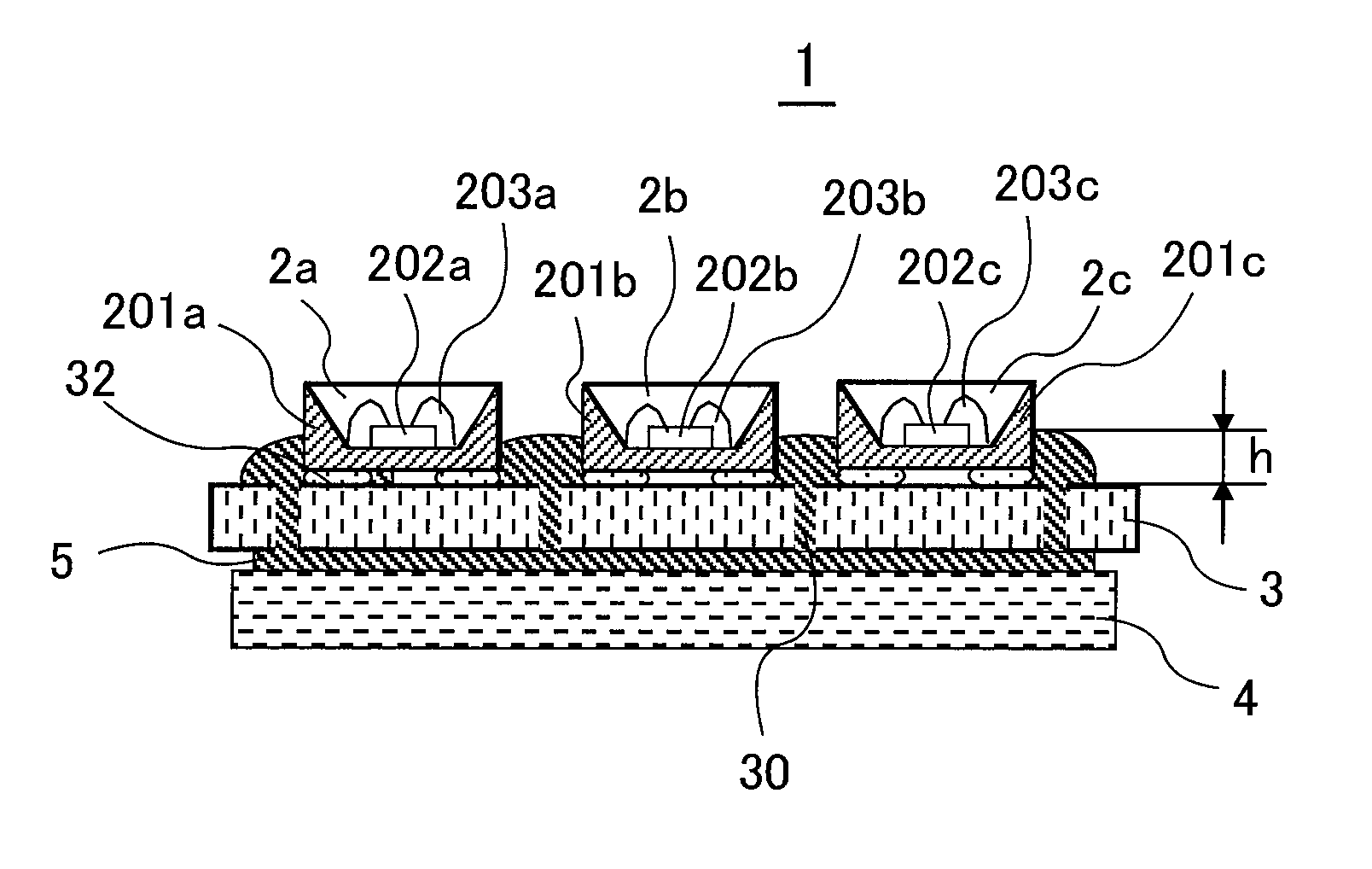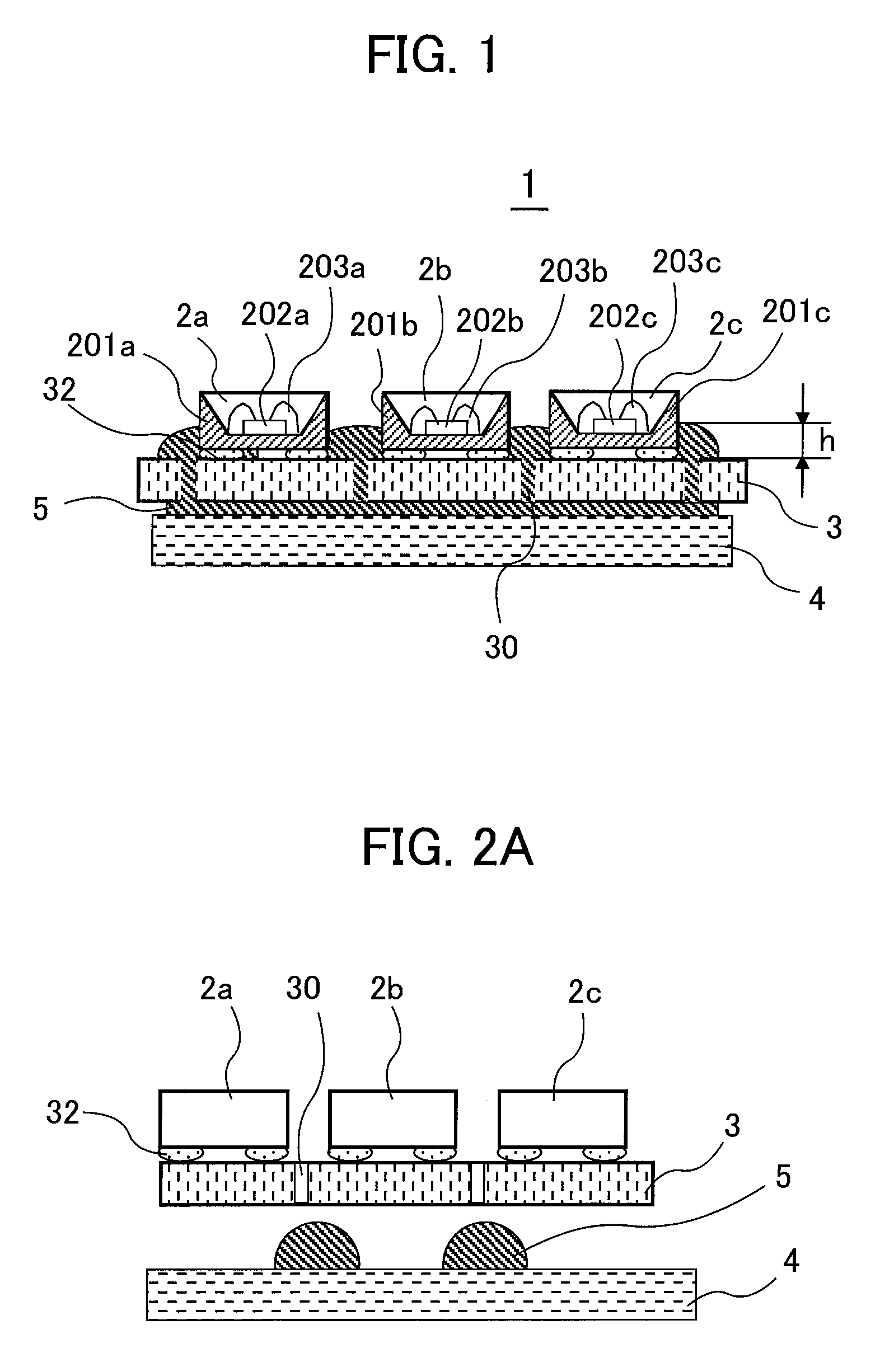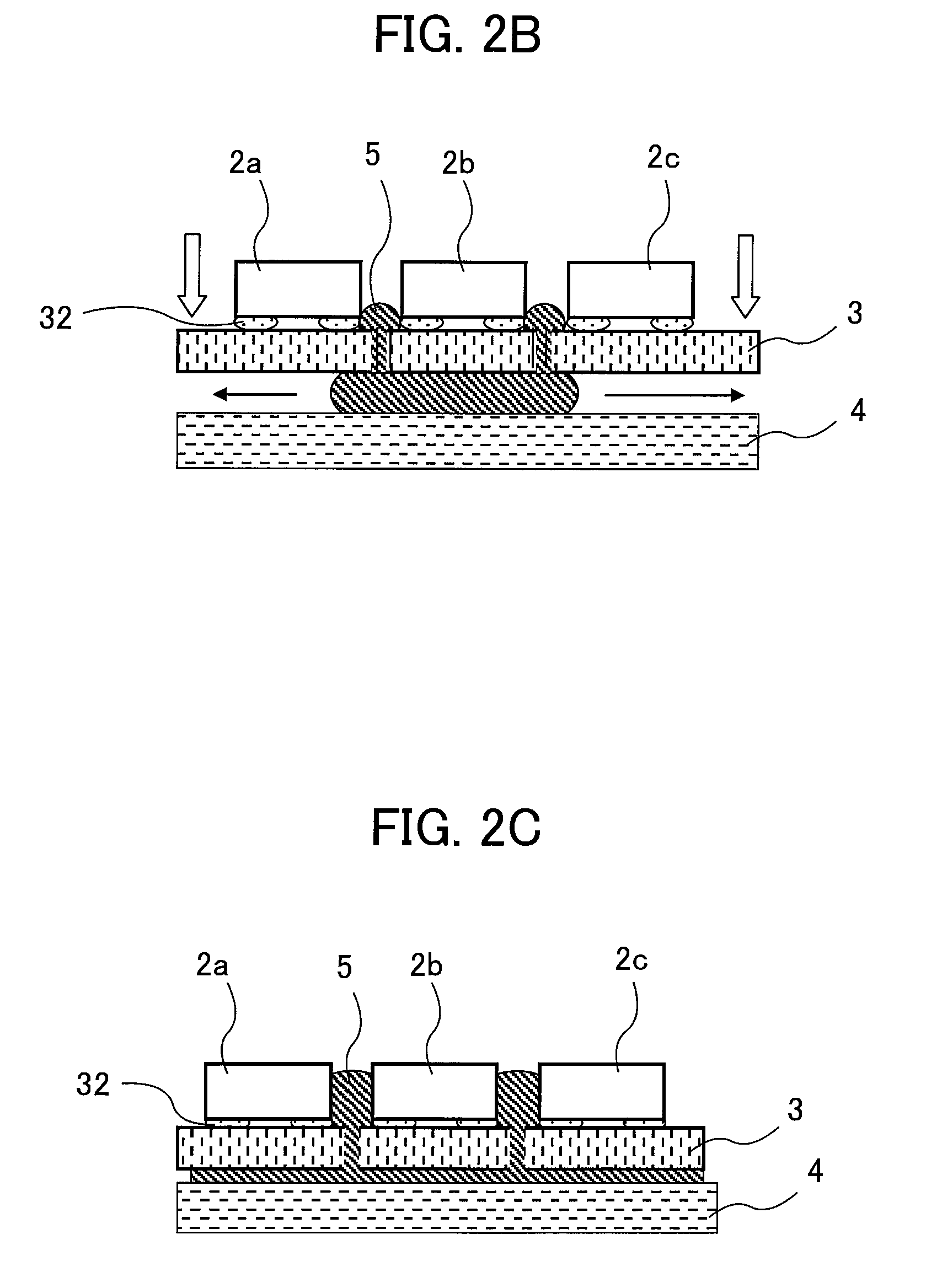LED light source, its manufacturing method, and LED-based photolithography apparatus and method
a technology of led light source and manufacturing method, which is applied in the direction of photomechanical equipment, instruments, printers, etc., can solve the problems of shortening the mechanical life of led light source, reducing light intensity, and light intensity, so as to reduce temperature variations, reduce temperature variations, and efficiently transfer
- Summary
- Abstract
- Description
- Claims
- Application Information
AI Technical Summary
Benefits of technology
Problems solved by technology
Method used
Image
Examples
embodiment 1
[0042]FIG. 1 is a cross section of an LED light source according to Embodiment 1 of the invention. The LED light source 1 of FIG. 1 includes the following components: a substrate 3; multiple LED substrates 2a to 2c; and a heat sink plate 4. The LED substrates 2a to 2c, that is, substrates on which to mount LEDs, are arranged on the substrate 3 at particular intervals in the form of a single row or multiple rows. The heat sink plate 4 is attached to the bottom surface of the substrate 3. The connection among the LED substrates 2a to 2c, the substrates 3, and the heat sink plate 4 is made by thermally conductive resin 5 (e.g., silicone adhesive).
[0043]Each of the LED substrates 2a to 2c is structurally the same as the LED substrate 10 of FIG. 5. The LED substrates 2a to 2c each include a ceramic substrate 201, an LED chip 202, and wires 203. The ceramic substrate 201 has a square shape with the size of from 2 by 2 mm to 7 by 7 mm and with the thickness of 1.5 to 3 mm. The LED chip 202...
embodiment 2
[0059]FIG. 3 is a cross section of an LED light source according to Embodiment 2 of the invention. As illustrated, protrusions 307 are formed on the top surface of a heat sink plate 304, and alignment holes 308 are formed in a substrate 303 so that each of the protrusions 307 can be inserted into one of the alignment holes 308. By aligning the protrusions 307 with the alignment holes 308, the position of the heat sink plate 304 relative to the substrate 303 can be determined.
[0060]The height of each of the protrusions 307 is greater than the thickness of the substrate 303. Thus, the top ends 307a of the protrusions 307 protrude from the top surface of the substrate 303 on which ceramic substrates 301a and 301b (i.e., LED substrates 300a and 300b) are mounted.
[0061]By applying the same bonding process as illustrated in FIGS. 2A to 2C, thermally conductive resin 305 applied between the heat sink plate 304 and the substrate 303 flows upward from the through holes 309 of the substrate 3...
embodiment 3
[0063]FIG. 4 is a cross section of an LED light source according to Embodiment 3 of the invention, which light source is intended for use in a photolithography apparatus. The LED light source 1A of FIG. 4 differs from its counterparts of Embodiments 1 and 2 in that a lens substrate 402 is placed on the ceramic substrates 401 of LED substrates 410. The lens substrate 402 has windows 411, and a lens 412 is fit in each of the windows 411 in order to prevent light dispersion. Each of the lenses 412 is designed to convert radial light rays emitted from the LED substrates 410 into parallel ones.
[0064]Each of the lenses 412 has a transmittance of 50% or greater at the wavelength of the light from the LED substrates 410 and is molded from inorganic glass such as quartz or the like or from organic resin such as silicone resin, acrylic resin, or epoxy resin. The lenses 412 can be spherical lenses, aspherical lenses, or Fresnel lenses.
[0065]The LED light source 1A of FIG. 4 can be fabricated b...
PUM
 Login to View More
Login to View More Abstract
Description
Claims
Application Information
 Login to View More
Login to View More - R&D
- Intellectual Property
- Life Sciences
- Materials
- Tech Scout
- Unparalleled Data Quality
- Higher Quality Content
- 60% Fewer Hallucinations
Browse by: Latest US Patents, China's latest patents, Technical Efficacy Thesaurus, Application Domain, Technology Topic, Popular Technical Reports.
© 2025 PatSnap. All rights reserved.Legal|Privacy policy|Modern Slavery Act Transparency Statement|Sitemap|About US| Contact US: help@patsnap.com



